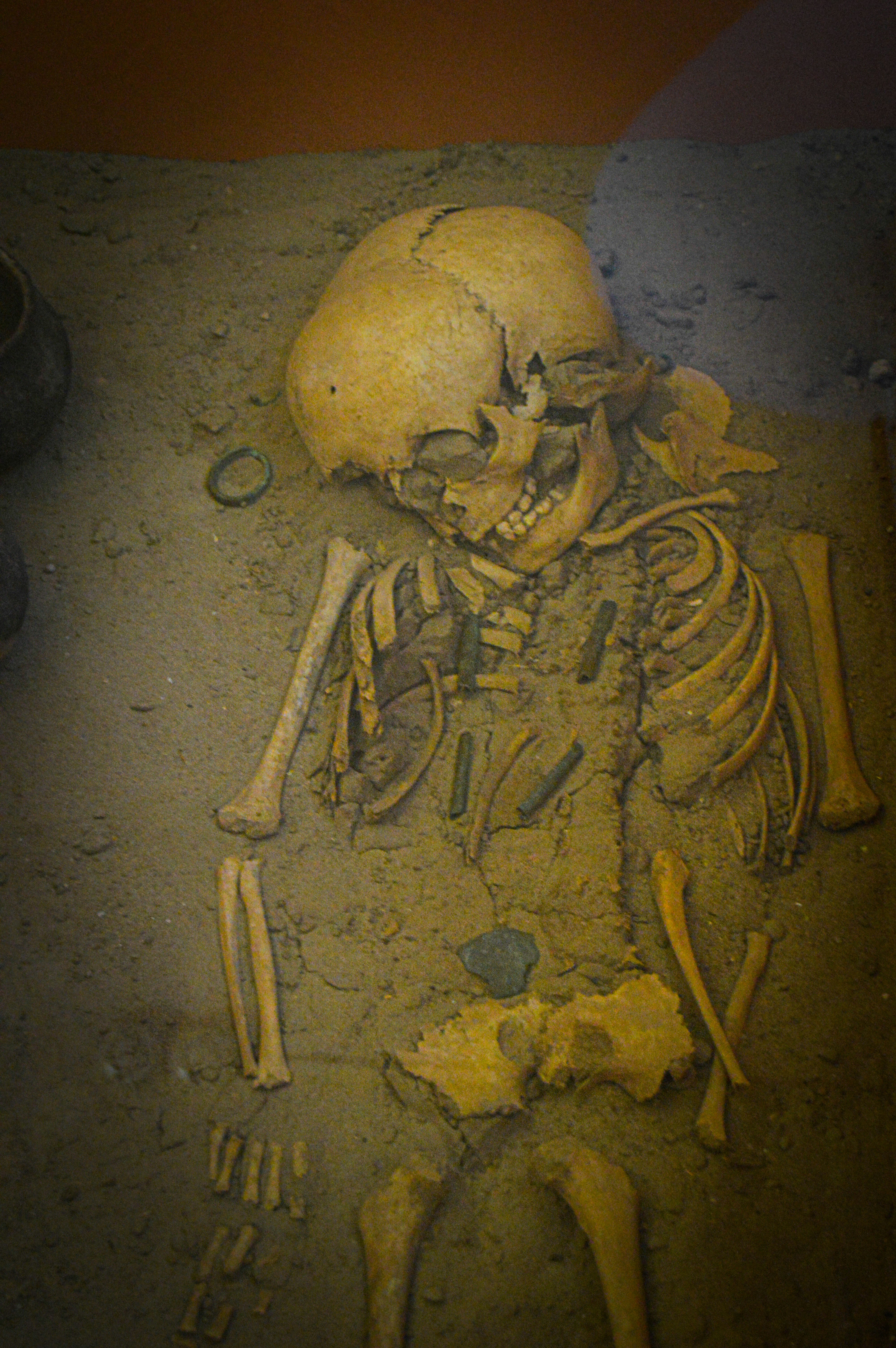
Photo by <a href="https://unsplash.com/@aaronburden" rel="nofollow">Aaron Burden</a> on <a href="https://unsplash.com/?utm_source=hostinger&utm_medium=referral" rel="nofollow">Unsplash</a>
Introduction to Actinobiology
Actinobiology is an interdisciplinary field that explores the effects of radiation on living organisms, encompassing a wide range of biological, ecological, and medical domains. Fundamentally, actinobiology is synonymous with radiobiology, reflecting its core focus on how various types of radiation—from ultraviolet light to ionizing radiation—impact biological systems. This field has gained prominence due to the increasing exposure of living organisms to natural and artificial radiation sources, necessitating a deeper understanding of the biological ramifications.
The significance of actinobiology extends beyond mere academic investigation; it plays a crucial role in numerous applications, including environmental science, medicine, and occupational health. For example, in the medical field, knowledge stemming from actinobiological studies is essential for applying radiation therapy to treat cancer. Understanding the cellular response to radiation helps in optimizing therapeutic protocols while minimizing damage to healthy tissues. Similarly, insights derived from actinobiology are critical in assessing the impact of environmental radiation exposure on both human and ecological health.
Moreover, actinobiology addresses the adaptive mechanisms that living organisms employ in response to radiation. This includes examining DNA repair processes, cellular repair systems, and even evolutionary adaptations that provide resilience against heightened radiation levels. As such, the study of actinobiology not only informs us about the immediate biological effects of radiation but also contributes to a broader understanding of evolutionary processes in the context of environmental change.
In summary, actinobiology serves as a vital discipline that deepens our comprehension of radiation’s multifaceted impacts on living organisms. Its relevance spans various sectors, highlighting the importance of ongoing research and study in this critical area of scientific inquiry.
Historical Background of Actinobiology
Actinobiology, the scientific study of the effects of radiation on living organisms, has a rich history that dates back to the late 19th century. One of the pivotal moments in this field occurred in 1895 when Wilhelm Röntgen discovered X-rays. This groundbreaking discovery not only revolutionized medical imaging but also sparked an interest in understanding the effects of radiation on biological systems. Following Röntgen’s findings, researchers began to explore the implications of electromagnetic radiation on human health and organism behavior.
In the early 20th century, Marie Curie’s work with radium brought significant attention to the effects of radioactive substances. Her pioneering research laid the groundwork for subsequent investigations into the biological impacts of radiation exposure. Items such as radium dial paints, although useful, turned into hazardous materials, becoming a focal point for radiation safety and biological studies. The AEC (Atomic Energy Commission) was established in 1946, further endorsing the academic exploration of radiation’s biological interactions.
The 1950s to the 1970s marked a crucial period in actinobiology, characterized by significant research into the cellular and genetic ramifications of radiation exposure. Landmark studies, such as those performed on the survivors of the Hiroshima and Nagasaki bombings, provided critical insights into the long-term health effects of ionizing radiation. Researchers like Hermann A. Schempp contributed to the understanding of radiation’s mutagenic effects, identifying how radiation could alter DNA and lead to carcinogenic developments.
Advancements in technology through the latter part of the 20th century facilitated a deeper understanding of molecular and cellular responses to radiation. This era witnessed the emergence of sophisticated radiation measurement techniques and biological assays, leading to a more nuanced comprehension of radiation biology and its implications. As scientific inquiry into actinobiology continues to evolve, the cumulative knowledge gained over the decades highlights the intricate relationship between living organisms and radiation exposure.
Types of Radiation Studied in Actinobiology
Actinobiology, the scientific examination of radiation’s influence on living organisms, encompasses a variety of radiation types, primarily categorized into ionizing and non-ionizing radiation. Each type significantly impacts biological systems, eliciting diverse responses at cellular and organismal levels.
Ionizing radiation possesses sufficient energy to remove tightly bound electrons from atoms, leading to the formation of charged particles or ions. This category includes alpha particles, beta particles, gamma rays, and X-rays. Ionizing radiation can cause direct DNA damage, resulting in mutations that may lead to cancer or other genetic disorders. When living organisms encounter ionizing radiation, the cellular mechanisms attempt to repair the resulting damage, although the efficiency of repair can vary based on factors such as radiation dose and cell type. The biological ramifications of ionizing radiation highlight its potential hazards in medical applications, nuclear energy production, and environmental exposure.
Non-ionizing radiation, conversely, carries insufficient energy to ionize atoms but can still induce biological effects. This group includes ultraviolet (UV) light, visible light, infrared radiation, and radiofrequency radiation. UV radiation is particularly noteworthy in the context of actinobiology as it can cause skin damage, including sunburn and skin cancer, through mechanisms such as DNA photodamage and immune suppression. Studies in this field show that non-ionizing radiation has significant implications for health, particularly considering the increased exposure to sources such as artificial UV light and wireless technologies.
In summary, understanding the differences between ionizing and non-ionizing radiation is critical in actinobiology, as these types of radiation affect living organisms in distinct yet impactful manners. By delineating their mechanisms, researchers can better assess the risks associated with radiation exposure and develop effective strategies for protection and mitigation.
Mechanisms of Radiation Interaction with Biological Systems
The interaction of radiation with biological systems is a complex process that involves various mechanisms. Primarily, the biological effects of radiation stem from its ability to induce molecular alterations within cells, particularly in DNA. When ionizing radiation, such as X-rays or gamma rays, penetrates biological tissues, it can cause direct damage to DNA or result in the generation of free radicals through indirect effects. These free radicals, which are highly reactive molecules, can further lead to secondary damage to cellular structures, including lipids and proteins.
One of the pivotal outcomes of radiation exposure is DNA damage, which can manifest in several forms, including single-strand breaks, double-strand breaks, and base modifications. If not adequately repaired, such damage can result in mutations, genomic instability, and eventually contribute to carcinogenesis. Cellular repair mechanisms play a critical role in addressing these lesions. The primary repair pathways include non-homologous end joining (NHEJ) and homologous recombination (HR), each offering distinct advantages in restoring genetic integrity. NHEJ tends to be the dominant repair pathway for double-strand breaks in most mammalian cells, while HR is typically engaged during the S and G2 phases of the cell cycle, where a sister chromatid is available as a template.
The implications of radiation exposure are profound, not only for cancer development but also for other health-related issues such as cardiovascular diseases and neurodegeneration. The different cellular responses to radiation can vary significantly between normal and cancerous tissues, influencing treatment methods in radiotherapy. An understanding of these mechanisms is crucial in therapeutic contexts, where maximizing cellular damage in tumors while protecting surrounding healthy tissues remains a significant challenge. Through ongoing research in actinobiology, researchers aim to elucidate these intricate interactions, thus enhancing our ability to manage the risks associated with radiation exposure.
Applications of Actinobiology in Medicine and Industry
Actinobiology, the study of the effects of radiation on living organisms, has significant implications for both medicine and various industries. In the medical field, one of the most prominent applications is in cancer therapy. Radiation therapy utilizes focused ionizing radiation to target and damage cancer cells, minimizing harm to surrounding healthy tissues. By understanding the biological effects of radiation through actinobiology, medical professionals can optimize dosage and treatment schedules to enhance effectiveness while mitigating side effects. Advances in imaging techniques, such as positron emission tomography (PET), also derive from a comprehensive understanding of radiation interactions at cellular levels, enabling precise diagnostic capabilities.
Beyond oncology, actinobiology plays a vital role in medical imaging and radiological safety. The insights gained from studying radiation’s biological impact inform safety standards and exposure guidelines for both patients and healthcare providers. The establishment of appropriate radiation doses, informed by actinobiological research, ensures that diagnostic imaging techniques remain safe while still providing essential health information.
In industrial applications, actinobiology is instrumental in the nuclear energy sector. Understanding the biological effects of radiation exposure enables the development of stringent safety protocols to protect workers and the environment. Actinobiological principles guide the design of containment systems and emergency response strategies in the event of radiation leaks, emphasizing the importance of safety measures in nuclear power plants.
Furthermore, actinobiological studies contribute to research in radiation safety standards implemented in various industries, including the aerospace and food sectors, where exposure to radiation may occur. Knowledge derived from these studies enhances safety measures and minimizes adverse health effects from radiation exposure. The interdisciplinary nature of actinobiology reflects its essential role not only in healthcare but also in maintaining industrial safety.
Current Research Trends in Actinobiology
Actinobiology encompasses the scientific study of how radiation affects living organisms, a field that has seen remarkable advancements in recent years. Current research trends are increasingly focused on understanding the intricate mechanisms by which various types of radiation interact with biological tissues. This pursuit has been driven by both the need for improved safety standards in environments with radiation exposure and the potential for applying these findings to medical treatments, such as cancer therapy.
One notable area of research involves the use of innovative technologies such as CRISPR-Cas9 gene editing, which allows scientists to investigate the specific genetic responses of organisms to radiation. By manipulating genes identified as pivotal in radiation response, researchers can gain deeper insights into themes such as DNA repair mechanisms and cellular apoptosis. Alongside this, the advent of advanced imaging techniques provides a more comprehensive view of radiation effects at the cellular and molecular levels. Techniques like high-resolution microscopy and functional imaging enable scientists to visualize real-time responses to radiation exposure.
Emerging interdisciplinary collaborations are also influencing the direction of actinobiological research. Partnerships between biologists, physicists, and medical researchers are creating a more holistic understanding of how radiation affects biological systems. For example, by integrating computational modeling with experimental data, researchers can predict the long-term consequences of radiation exposure on living organisms. Additionally, the exploration of the microbiome’s interactions with radiation further highlights the complexities in this field, emphasizing the need for a multidisciplinary approach.
In conclusion, the study of actinobiology is evolving rapidly, reflecting a growing interest in the diverse effects of radiation on living organisms. As research progresses, the integration of cutting-edge technologies and interdisciplinary strategies will be crucial in unraveling the complexities of radiation interactions and their implications for health and safety.
Challenges and Controversies in Actinobiology
The field of actinobiology, which involves the study of the effects of radiation on living organisms, faces several significant challenges and controversies. One of the most pressing issues pertains to radiation exposure limits. Regulatory bodies have established guidelines to protect public health, but these limits often provoke debate among scientists, policymakers, and the public. Discrepancies between different organizations’ standards can lead to confusion about what constitutes safe exposure to radiation, impacting both research and public health policies.
Furthermore, public perception of radiation risks presents another challenge in actinobiology. While some individuals may understand the scientific principles underlying radiation, others may have misconceptions fueled by media portrayals of radiation and its effects. This lack of understanding can lead to increased fear and resistance to technologies that utilize radiation, such as medical imaging or treatment options. Addressing these perceptions through effective communication is vital for promoting informed decision-making and advancing the application of actinobiological research in practical scenarios.
Ethical considerations also play a crucial role in the challenges faced by researchers in actinobiology. The potential risks associated with radiation exposure in laboratory settings or clinical trials necessitate a careful approach to research design. Scientists must balance the pursuit of knowledge with the obligation to protect both human and non-human subjects from potential harm. Additionally, the implications of findings in actinobiology can raise ethical questions regarding the broader impact of radiation exposure on ecological systems, which is particularly relevant in light of environmental concerns.
In summary, the challenges and controversies in actinobiology highlight the complex interplay between scientific understanding, public perception, and ethical responsibilities. Addressing these issues is essential for the advancement of the field and the responsible application of radiation-related research.
The Future of Actinobiology
The field of actinobiology, which examines the effects of radiation on living organisms, stands at a pivotal juncture as it ventures into an era characterized by rapid technological advancements and growing awareness of radiation’s biological implications. As researchers delve deeper into the intricacies of how various types of radiation impact cellular processes, we can anticipate significant developments that may not only enrich our understanding of biological responses to radiation but also pave the way for innovative therapeutic approaches.
One of the most promising areas of exploration is the integration of actinobiology with regenerative medicine. With advancements in cellular and molecular biology, it is possible to harness the body’s natural healing capabilities while simultaneously mitigating radiation-induced damage. For instance, gene editing techniques, such as CRISPR, may be employed to repair DNA lesions caused by radiation exposure, thereby offering new treatment modalities for individuals affected by high radiation environments.
Moreover, the enhancement of imaging technologies, such as high-resolution imaging and real-time monitoring, could revolutionize how researchers observe and analyze the effects of radiation at a cellular level. This could lead to early detection of radiation-induced abnormalities and inform preventive interventions before damage escalates. Additionally, by utilizing machine learning and artificial intelligence, researchers may unlock patterns in large datasets that correlate exposure levels to specific biological outcomes, thereby accelerating the development of targeted therapies.
Furthermore, the continued collaboration between interdisciplinary fields, including physics, environmental science, and bioinformatics, can foster a more comprehensive understanding of actinobiological phenomena. As regulations concerning radiation exposure evolve and public interest in health and safety grows, the potential for actinobiology to influence policy and preventive healthcare strategies will also increase. Ultimately, the future of actinobiology holds vast potential, promising not only advancements in therapeutic interventions but also enhancements in public health and safety in an increasingly radiation-rich environment.
Conclusion
In this examination of actinobiology, we have explored the intricate relationship between radiation and living organisms. Actinobiology is a critical field that investigates how various forms of radiation impact biological systems, encompassing everything from microscopic cells to entire ecosystems. Understanding this area of study not only enhances our knowledge regarding the biological responses to radiation but also elucidates its implications across diverse sectors, including healthcare, agriculture, and environmental science.
Throughout the discussion, it has become evident that the effects of radiation, whether beneficial or detrimental, are pivotal in informing practices such as radiation therapy in medicine and the assessment of environmental radiation levels. The insights derived from actinobiology contribute significantly to safeguarding public health, improving agricultural yields, and developing prudent policies regarding radiation exposure in various industries. The nuances of how organisms adapt to or are harmed by radiation provide essential data that can help mitigate risks associated with radiation exposure.
Moreover, the continual advancements in radiation research pave the way for innovative applications and interventions. As the world grapples with challenges related to radiation—from medical uses to environmental contamination—the significance of actinobiology cannot be overstated. It accentuates the need for ongoing research and collaboration among scientists, policymakers, and industry leaders to ensure a comprehensive understanding of radiation’s effects on living organisms. By cultivating an awareness of these dynamics, we can foster a safer and more informed approach to managing radiation in our daily lives.





